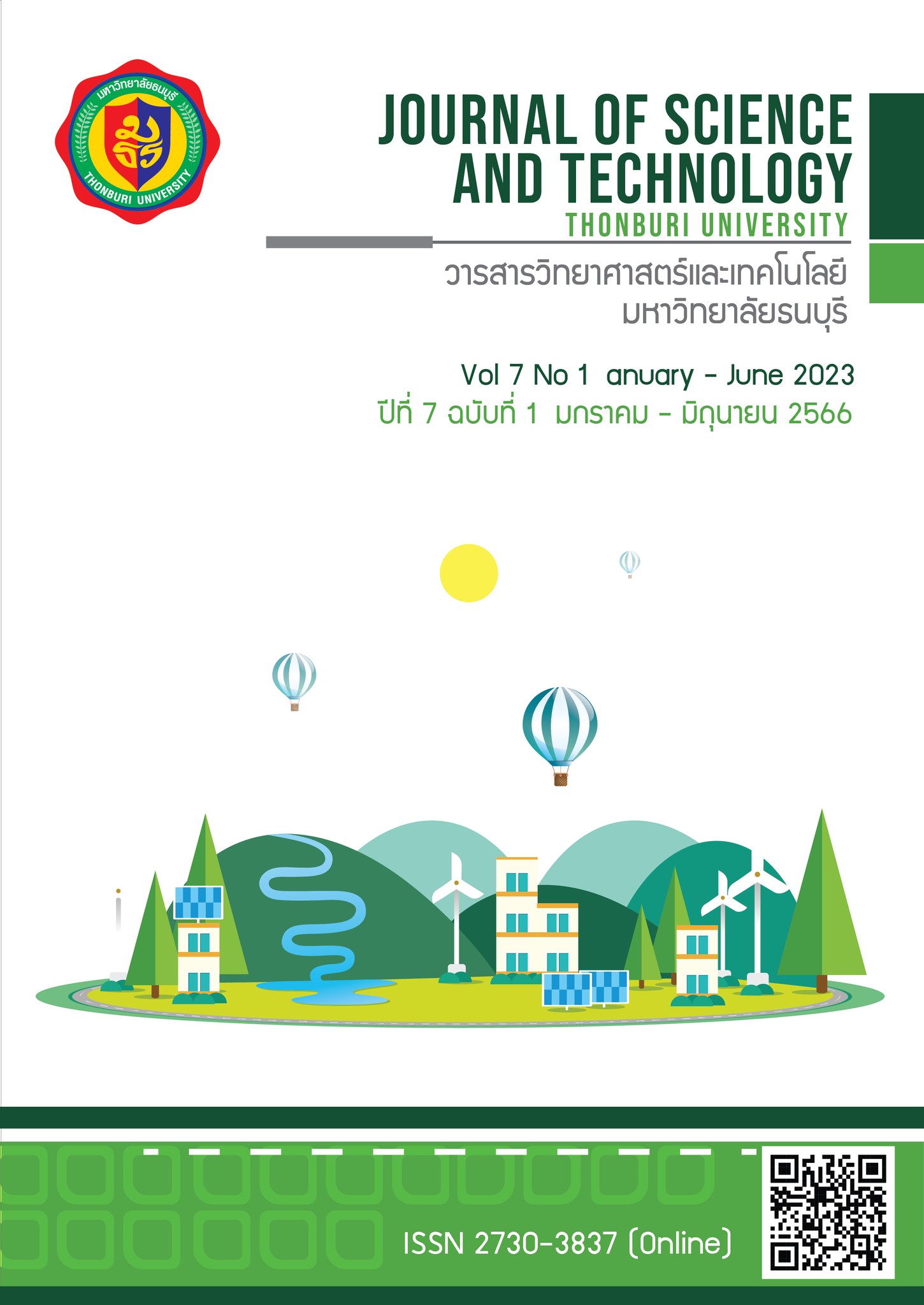การบริหารสินค้าสำเร็จรูป กรณีศึกษา บริษัทผลิตเครื่องปรับอากาศในไทย
คำสำคัญ:
บริหารสินค้าคงคลัง, ปริมาณการซื้อสินค้าที่เหมาะสม, จุดสั่งสินค้าที่เหมาะสมบทคัดย่อ
ระบบบริหารคลังสินค้าเป็นระบบหนึ่งที่สำคัญในการตรวจสอบสภาพ หรือจำนวนของสินค้าว่ามีเพียงพอต่อความต้องการของลูกค้าหรือไม่ การบริหารคลังสินค้าไม่เพียงแต่จะบริหารจากระบบห่วงโซ่อุปทานภายในองค์กรเท่านั้น การบริหารคลังสินค้าจำเป็นที่จะต้องพิจารณาถึงข้อมูลของห่วงโซ่อุปทานที่เกี่ยวเนื่องกับองค์กรด้วย เช่น ความต้องการของลูกค้า ในการศึกษาครั้งนี้ได้มีจุดประสงค์เพื่อลดความสูญเสียที่เกิดจากการผลิตสินค้าสำเร็จรูปเข้าสู่คลังสินค้ามากเกินความต้องการของลูกค้า เป็นผลทำให้เกิดความสูญเสียในระบบ ในการศึกษาครั้งนี้จะนำวิธีการบริหารคลังสินค้า โดยการหาปริมาณการสั่งซื้อที่เหมาะสม และการหาจุดสั่งสินค้าที่เหมาะสมมาประยุกต์ใช้ในโรงงานผลิตเครื่องปรับอากาศสำหรับการผลิตเครื่องปรับอากาศเข้าสู่คลังสินค้าเพื่อรอการขาย ข้อมูลสถิติความต้องการของลูกค้า และข้อมูลการผลิตได้ถูกนำมาใช้ในการคำนวณเพื่อหา จุดที่จะเริ่มผลิตสินค้าสำเร็จรูปเติมเข้าคลังสินค้า และปริมาณสินค้าที่จะผลิตเพื่อเติมเข้าคลังสินค้า ระบบที่ออกแบบมาใหม่ถูกนำไปใช้ทดลองในการทำงานเป็นระยะเวลา 4 สัปดาห์ ผลที่ได้จากการทดลองนำแผนการที่ได้ออกแบบมาไปใช้แสดงให้เห็นว่าสินค้าสำเร็จรูปที่ผลิตไว้รอการขายที่เกินความต้องการจากสัปดาห์แรกที่มีค่าเฉลี่ยร้อยละ 42 ลดลงเหลือร้อยละ 7 ที่สัปดาห์ที่ 4 ซึ่งสะท้อนให้เห็นถึงความสูญเสียที่ผลิตเกินความจำเป็นลดลง และต้นทุนในการจัดเก็บที่ลดลง นอกจากนี้ยังนำเสนอข้อสังเกตุ และข้อจำกัดงานวิจัยในครั้งนี้
เอกสารอ้างอิง
Harris, F. W. (1913). How many parts to make at once, Factory. The Magazine of Management, 10(2), 135–136, 152.
Grewal, C. S., Enns, S. T., & Rogers, P. (2015). Dynamic reorder point replenishment strategies for a capacitated supply chain with seasonal demand. Computers & Industrial Engineering, 80, 97-110.
Wang, C. H. (2010). Some remarks on an optimal order quantity and reorder point when supply and demand are uncertain. Computers & Industrial Engineering, 58(4), 809-813.
Mebarki, N., & Shahzad, A. (2013). Correlation among tardiness-based measures for scheduling using priority dispatching rules. International Journal of Production Research, 51(12), 3688-3697.
Wu, K. S., Ouyang, L. Y., & Yang, C. T. (2006). An optimal replenishment policy for non-instantaneous deteriorating items with stock-dependent demand and partial backlogging. International Journal of Production Economics, 101(2), 369-384.
Krommyda, I. P., Skouri, K., & Konstantaras, I. (2015). Optimal ordering quantities for substitutable products with stock-dependent demand. Applied Mathematical Modelling, 39(1), 147-164.
Lu, L., Zhang, J., & Tang, W. (2016). Optimal dynamic pricing and replenishment policy for perishable items with inventory-level-dependent demand. International Journal of Systems Science, 47(6), 1480-1494.
Mishra, U., Cárdenas-Barrón, L. E., Tiwari, S., Shaikh, A. A., & Treviño-Garza, G. (2017). An inventory model under price and stock dependent demand for controllable deterioration rate with shortages and preservation technology investment. Annals of operations research, 254(1), 165-190.
Jaggi, C. K., Gupta, M., Kausar, A., & Tiwari, S. (2019). Inventory and credit decisions for deteriorating items with displayed stock dependent demand in two-echelon supply chain using Stackelberg and Nash equilibrium solution. Annals of Operations Research, 274(1), 309-329
Chen, X., Benjaafar, S., & Elomri, A. (2013). The carbon-constrained EOQ. Operations Research Letters, 41(2), 172-179.
Hasan, M. R., Roy, T. C., Daryanto, Y., & Wee, H. M. (2021). Optimizing inventory level and technology investment under a carbon tax, cap-and-trade and strict carbon limit regulations. Sustainable Production and Consumption, 25, 604-621.
ดาวน์โหลด
เผยแพร่แล้ว
รูปแบบการอ้างอิง
ฉบับ
ประเภทบทความ
สัญญาอนุญาต

อนุญาตภายใต้เงื่อนไข Creative Commons Attribution-NonCommercial-NoDerivatives 4.0 International License.




